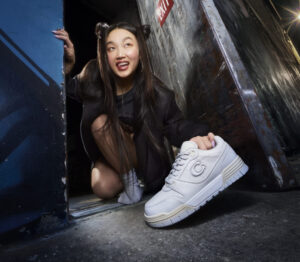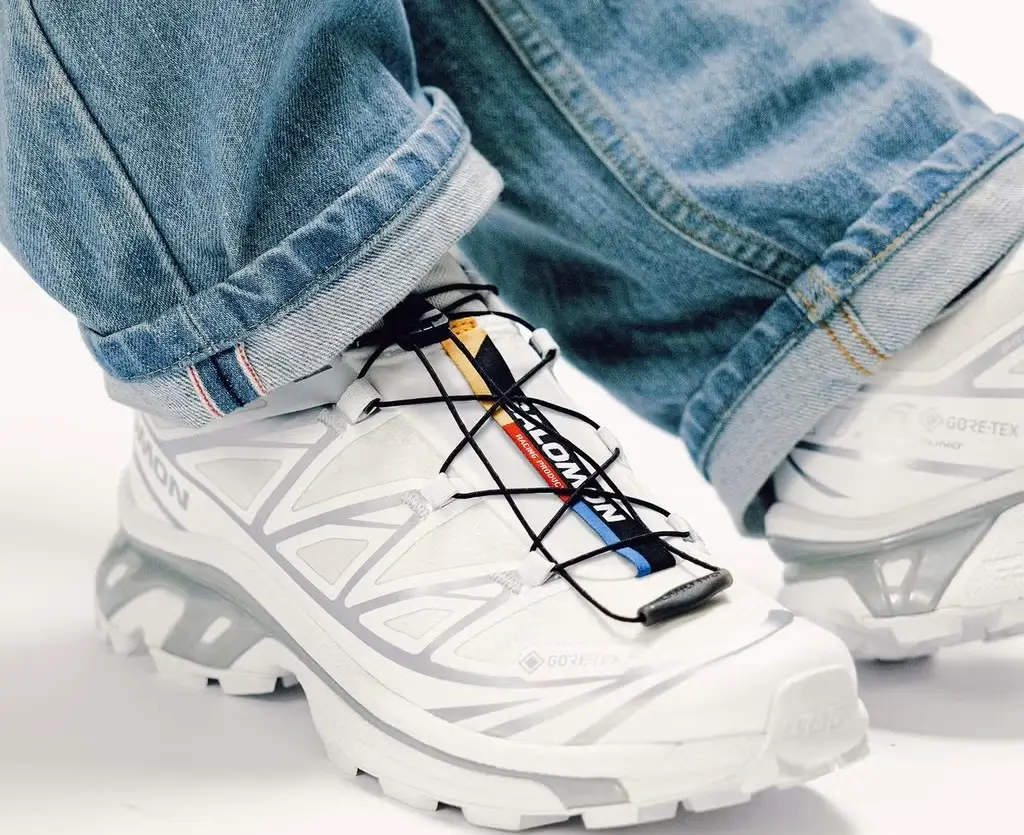
In a world where the sneaker market often feels bloated by connections, recycled silhouettes, and algorithmic marketing, Coach has taken a sharp, cultural turn back toward authenticity. The newly launched Soho Sneaker campaign, aptly titled “Not Just For Walking”, does more than sell a shoe—it redefines who that shoe is for, where it lives, and what it means to move in it.
Directed by visual powerhouse Colin Tilley and guided by the enduring vision of Creative Director Stuart Vevers, the campaign is a joyful, kinetic collage of city life. Shot in the storied streets of SoHo, New York—a place where fashion and rebellion have always intersected—it marks a return to the brand’s neighborhood roots while asserting a confident stride into a more inclusive, gender-neutral, youth-oriented future.
This isn’t just a trainer. It’s a canvas of self-expression. It’s SoHo, reinterpreted.
the shoe itself: form, function, and throwback intention
First introduced on the Spring 2025 runway, the Soho Sneaker is an homage to the golden age of American athleticwear—evoking the late ’80s and early ’90s with its low-profile silhouette, paneled leather build, and monochromatic white finish. But where other brands lean into retro fetishism, Coach resists nostalgia as a gimmick. The Soho is about feel, not replication.
Its construction is clean but never sterile: supple white leather, reinforced toe caps, and a molded outsole that recalls classic court shoes with modern tactility. The laces are wide, built to be styled loosely or tightly depending on the wearer. The Coach “C” subtly embossed on the heel tab is less of a logo, more of a whisper—a branding approach that aligns with Vevers’ long-term strategy of moving the brand from overt luxury to cultural relevance.
The shoe, while rooted in archival DNA, feels built for today’s movement. Not athletic performance. Not hype resale. But daily expression—in all its messy, beautiful, and unexpected forms.
“not just for walking”: campaign as cinematic realism
The campaign video, directed by Colin Tilley, feels more like a short film than a fashion advertisement. Tilley, known for his visual storytelling in music videos and brand cinema, treats the sneaker as a witness rather than a subject. It’s there in all scenes—yes—but never as a product being displayed. Rather, it’s worn, lived in, moved through.
Whether worn by Audrey Nuna dancing through a graffiti-splashed alleyway, or Satou Sabally shooting hoops in a downtown park, the sneaker becomes a companion, not a commodity. We see skateboarders, mechanics, DJs, lovers—all distinct, all radically themselves, all in Soho Sneakers.
The campaign does not lecture. It doesn’t try to define what “real” means. Instead, it shows it: in the scuff marks, the laces undone, the heel kicked off against a curb. It’s not about keeping the sneaker pristine—it’s about what happens to it and because of it. It lives in motion.
courage to be real: Coach’s new brand thesis
“Courage to Be Real,” Coach’s guiding ethos for the past two years, finds its fullest expression in this campaign. While previous launches danced around this language—often positioning “realness” in terms of celebrity vulnerability or raw studio portraits—the Soho Sneaker campaign embodies it viscerally.
Each figure in the campaign isn’t presented as an icon. They’re shown as people in context. Tahaad Pettiford, a rising basketball star, isn’t lit like a superhero—he’s lacing his sneakers at the edge of a city court, laughing with friends. Toni Breidinger, a groundbreaking NASCAR driver, isn’t placed in a pit stop—but leaning against a garage wall, hair undone, lost in a moment of stillness.
These vignettes are rich because they resist curation. They feel lifted from life, not storyboarded into aesthetic categories. And yet, there’s a consistent thread: movement as self-expression. Not just how you walk—but how you run, spin, pivot, hesitate, and leap.
the Soho Shoe and the gender-neutral future
Coach has long flirted with gender fluidity in its clothing collections—deconstructing silhouettes, erasing binary markers, and casting diverse models in its campaigns. But with the Soho Sneaker, the message crystallizes. This is not a “men’s” or “women’s” sneaker. It’s a wearer’s sneaker.
The design is universal in aesthetic but nuanced in fit, accommodating a variety of foot shapes and gait preferences. It’s not about androgyny or neutrality in the aesthetic sense—it’s about access and choice. How you wear it, what you pair it with, and how you move in it—that’s left to the individual.
And in an industry still obsessed with gender segmentation—still using pink for “her” and black for “him”—Coach’s approach feels refreshingly democratic. The product doesn’t tell you who to be. It listens to who you are.
SoHo as symbol: history, fashion, and community
By anchoring the campaign in SoHo, Coach isn’t just referencing a physical location—it’s invoking a lineage. SoHo isn’t just where Coach was born; it’s where countless fashion revolutions began. The downtown ateliers, the bootstrapped galleries, the DIY runways in loft spaces—SoHo has always been a birthplace of rebellion, a petri dish for subculture.
The Soho Sneaker, then, is a literal walk through that history. It nods to the white Reeboks and Nike Cortezes of 1991, to the high-top/streetwear crossover of the early aughts, to the “normcore” flattening of sneaker culture in the 2010s. But it does not revive these moments—it builds on them, proposing a future in which style and identity move hand in hand.
The choice to launch the campaign through SoHo streets, not a glossy studio, reaffirms this. Fashion isn’t happening behind glass. It’s happening at intersections, in stairwells, across crosswalks. Coach understands that SoHo isn’t just a ZIP code—it’s a pulse.
celebrity as community, not hierarchy
The casting of the campaign is a triumph of horizontal storytelling. Rather than assembling a cast of traditional high-fashion faces or a singular celebrity spokesperson, Coach has woven together a tapestry of voices—each unique, none dominating.
Giovanna Ramos walks the city with the fluid elegance of a dancer, her presence a study in stillness amid chaos. Audrey Nuna channels streetwise nonchalance with a sonic energy that vibrates off the screen. Satou Sabally, with her six-foot-four frame and athletic grace, defies expectations of femininity and power. Tahaad Pettiford and Toni Breidinger round out the ensemble with energy and edge.
The result is a campaign that does not create aspirational distance. Instead, it builds community. These aren’t people to become. They are people to walk beside—figuratively and literally. Their differences don’t blur into sameness. They amplify one another. And the shoe becomes the common ground.
real clothes for real life: Vevers’ ongoing mission
Since joining Coach in 2013, Stuart Vevers has gradually, methodically shifted the brand from leather heritage to culture-forward relevance. His vision has always walked the line between accessible luxury and personal narrative—elevated basics that invite interpretation, not dictate identity.
The Soho Sneaker is perhaps the most distilled example of this philosophy yet. Vevers has said, “This collection is about real clothes in a real, relevant, and urban environment.” The shoe lives that thesis. It’s not a runway ornament. It’s not chasing TikTok virality. It’s designed to be worn, to be beaten up, to carry the scuffs and stories of whoever chooses it.
And in that, it aligns beautifully with a broader cultural shift: toward honesty, toward flexibility, toward design that supports life instead of dictating it.
Flow: not just a campaign, but a conversation
“Not Just For Walking” is more than a clever tagline. It’s a manifesto. A statement that style does not have to scream. That the most impactful clothes are those that don’t transform you—but accept you.
The Soho Sneaker doesn’t promise to make you cooler, faster, or more followed. It promises to go with you—wherever you’re going, however you choose to get there.
And in a moment where so many brands still peddle aspiration disguised as authenticity, Coach offers something braver: presence. Not the fantasy of the runway, but the poetry of the sidewalk.
It walks with you. And that, truly, is not just for walking.
No comments yet.









